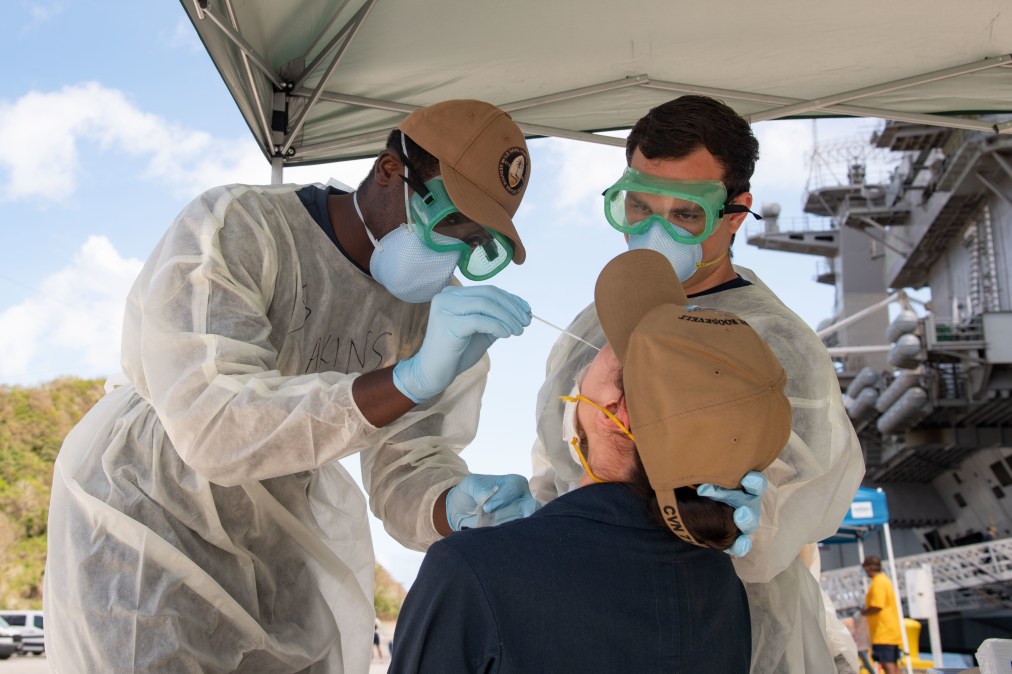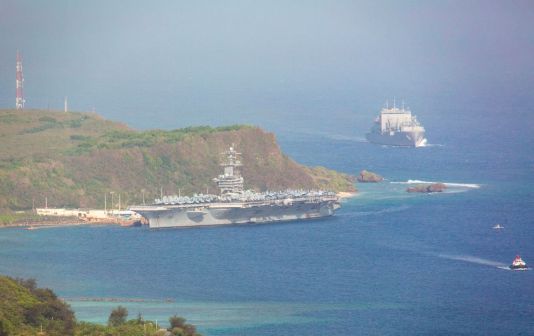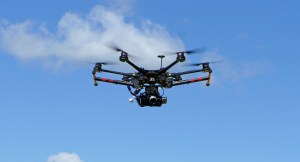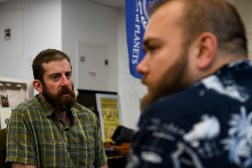How the Defense Digital Service helped control COVID-19 outbreaks on Navy ships

When the COVID-19 pandemic hit, the Navy’s ships were sitting ducks. Large populations living in close quarters were ripe for the coronavirus to spread, which is exactly what happened on the USS Theodore Roosevelt.
Alarmed by the outbreak on the aircraft carrier and on other ships, the Navy turned to the Defense Digital Service in March to help track the exploding number of cases. Within several days, DDS had launched an app, “MySymptoms” to collect data from sailors. Later the app was expanded for use at 17 Navy locations to help stem other outbreaks.
The process taught the tech-development agency a lot about its potential, Deputy Director Katie Olson said Thursday during FedTalks, the virtual conference presented by FedScoop.
“The pandemic has pushed the upper limit of what even DDS is able to do,” she said. DDS was able to pull together the app within 48 hours, setting a new speed record for the agency and a higher bar for its work, she said.
It was a prime example of the agile development practices that government technology leaders often talk about in the abstract. In this case, the product helped save lives. Olson credited DDS’s aggressive talent recruitment for some of the success.
“This is a priority, to hire the best tech talent in the world,” she said.
The app was also featured in a New England Journal of Medicine study of the outbreak on the Theodore Roosevelt. The Navy used the app to help collect and analyze health data every 12 hours, and health officials were then able to follow up with crew members who reported recurring symptoms.
DDS also helped the Navy when its hospital ships were used in New York and Los Angeles to support the overwhelmed medical systems in the pandemic’s early months. Coders deployed an anti-unmanned aerial vehicle system to stop rouge drones interrupting medical services. The anti-drone technology was used to keep hobbyists and unsuspecting drone users at bay from restricted air space above the military ship, DDS officials previously told FedScoop.
Olson also highlighted non-coronavirus related technology the agency has deployed during the pandemic. DDS partnered with the part of the DOD that onboards new employees at the Pentagon, the Washington Headquarter Service, to help them get people to work remotely and set them up for teleworking.
“DDS helped WHS apply technology and acquire equipment to help continue onboarding,” Olson said.






